Another interesting Infinity records compilation, mainly famous for featuring some great singles that were never on an album at the time. It is still the only LP where you can find Blackfeather's delicate, acoustic "Find Somebody To Love", or the marvelous "Song For A Blindman" by cult Sydney outfit 'Stafford Bridge'.
The Glyn Mason (ex-Chain) led version of 'Copperwine' is also here. Other tracks are duplicates of "The Stars Of Sunbury" LP (eg Warren Morgan, Country Radio, Billy Thorpe), but this is still a fine colection of rare/rare-ish classy Oz artists of the early 1970's. It retailed for $3.99 back in 1972.
It's a pity about the cheap, slapdash generic cover which has no relevance to the music whatsoever. But, as the saying goes: 'Never judge a book by its cover'. This is a great compilation of early 1970's Aussie Rock, I hope you enjoy it.
Blackfeather were an Australian rock group which formed in April 1970. The band has had numerous line-ups, mostly fronted by founding lead singer, Neale Johns. An early heavy rock version recorded their debut album, At the Mountains of Madness (April 1971), which peaked at number seven on the Go-Set Top 20 Albums chart. It provided the single, "Seasons of Change" (May 1971), which was co-written by Johns with lead guitarist, John Robinson. In July 1972 a piano-based line-up led by Johns issued an Australian number-one single, "Boppin' the Blues"/"Find Somebody To Love", which is a cover version of the Carl Perkins' 1956 single.
Blackfeather formed in April 1970 in Sydney by Leith Corbett on bass guitar, Mike McCormack on drums, and John Robinson on lead guitar (all from the Dave Miller Set), plus lead vocalist, Neale Johns. Robinson recalled meeting Johns, "a small guy with a huge voice, Neale was very taciturn. He was into the blues and had excellent range." Their name was derived from two found suggested in a book, "Whitefeather" and "Heavyfeather". Corbett and McCormack left soon after, replaced by Robert Fortesque on bass guitar and Alexander Kash on drums. Corbett subsequently reunited with singer Dave Miller to record a duo album, Reflections of a Pioneer. Johns and Robinson wrote or co-wrote the band's original material.
Copperwine
Following the departures of first Wendy Saddington, then Jeff St John, the remaining members of Copperwine recruited former Chain/Rebels singer/guitarist Glyn Mason to join as new front man All seemed to be business as usual when the band issued this fine debut single in 1972, a pioneering effort in the then emerging country rock field. Glyn did have mighty big shoes to fill & judged on talent alone, he certainly had the song writing ability & the voice but sales were not as might have been expected so the band disbanded soon after.
Blackfeather
Blackfeather were an Australian rock group which formed in April 1970. The band has had numerous line-ups, mostly fronted by founding lead singer, Neale Johns. An early heavy rock version recorded their debut album, At the Mountains of Madness (April 1971), which peaked at number seven on the Go-Set Top 20 Albums chart. It provided the single, "Seasons of Change" (May 1971), which was co-written by Johns with lead guitarist, John Robinson. In July 1972 a piano-based line-up led by Johns issued an Australian number-one single, "Boppin' the Blues"/"Find Somebody To Love", which is a cover version of the Carl Perkins' 1956 single.
Blackfeather formed in April 1970 in Sydney by Leith Corbett on bass guitar, Mike McCormack on drums, and John Robinson on lead guitar (all from the Dave Miller Set), plus lead vocalist, Neale Johns. Robinson recalled meeting Johns, "a small guy with a huge voice, Neale was very taciturn. He was into the blues and had excellent range." Their name was derived from two found suggested in a book, "Whitefeather" and "Heavyfeather". Corbett and McCormack left soon after, replaced by Robert Fortesque on bass guitar and Alexander Kash on drums. Corbett subsequently reunited with singer Dave Miller to record a duo album, Reflections of a Pioneer. Johns and Robinson wrote or co-wrote the band's original material.
 |
| Glyn Mason |
Following the departures of first Wendy Saddington, then Jeff St John, the remaining members of Copperwine recruited former Chain/Rebels singer/guitarist Glyn Mason to join as new front man All seemed to be business as usual when the band issued this fine debut single in 1972, a pioneering effort in the then emerging country rock field. Glyn did have mighty big shoes to fill & judged on talent alone, he certainly had the song writing ability & the voice but sales were not as might have been expected so the band disbanded soon after.
Glyn went onto become one of our most respected journeyman musos, returning to Chain briefly for a 2nd live album before forming his own band Home who issued to fine country/blues LPs.
From there he joined Mike Rudd in Ariel, the combination of their songs working a treat, with Glyn writing one of their most popular songs "It's Only Love". Later on Glyn lent his name to the popular Stockley See Mason Band alongside two other great Aussie journeymen Sam See & Chris Stockley, and to this day Glyn can still be seen around Melbourne with Sam, now calling themselves The Pardners.
Meantime bassist Harry Brus, has gone on to forge a sterling career of his own, being the bassist of choice for both Kevin Borich & Renee Geyer, both of whom he has worked with for many years, as well as a who's who of Australian music.
Phil Manning (Pilgrimage)
Philip John "Phil" Manning (born 1948) is an Australian blues singer-songwriter and guitarist. Manning has been a member of various groups including Chain and has had a solo career. As a member of Chain, Manning co-wrote their January 1971 single "Black and Blue" which became number one on the Melbourne charts and also Judgement, which reached number two in Sydney. The related album, Toward the Blues followed in September and peaked in the top 10 albums chart.
Manning left Chain in July 1971 to work with Warren Morgan (ex-Chain, Billy Thorpe & the Aztecs) on keyboards in a band called 'Pilgrimage'. They issued a single, "Just For You / Walk In The Light" in November 1971 and supported United Kingdom progressive rock group, Pink Floyd, in September and pop artist, Elton John, in October. The B-Side "Walk In The Light" was written by Manning and you can see him performing it below.
Phil Manning (Pilgrimage)
Philip John "Phil" Manning (born 1948) is an Australian blues singer-songwriter and guitarist. Manning has been a member of various groups including Chain and has had a solo career. As a member of Chain, Manning co-wrote their January 1971 single "Black and Blue" which became number one on the Melbourne charts and also Judgement, which reached number two in Sydney. The related album, Toward the Blues followed in September and peaked in the top 10 albums chart.
Manning left Chain in July 1971 to work with Warren Morgan (ex-Chain, Billy Thorpe & the Aztecs) on keyboards in a band called 'Pilgrimage'. They issued a single, "Just For You / Walk In The Light" in November 1971 and supported United Kingdom progressive rock group, Pink Floyd, in September and pop artist, Elton John, in October. The B-Side "Walk In The Light" was written by Manning and you can see him performing it below.
Sherbet
Sherbet were Australia's most popular pop group of the 70s with 20 consecutive hit records and 17 album, accounting for 10 platinum and 14 gold disc awards. In 1969 the Sydney entertainment scene was almost totally geared towards satisfying the money-rich comfort-starved American Vietnam troops who came for official Rest And Recreation.
Sydney's nightclubs gave them what they wanted - R&B, soul, funk, good-time rock - and these influences spilled over into the pop group Sherbet, formed without singer Daryl Braithwaite, but completed by his falsetto-capable vocals.
In January 1972, Sherbet's 'classic line-up' was in place when Tony Mitchell replaced Worrall on bass guitar: the band now consisted of lead vocalist Braithwaite, keyboardist Porter, drummer Sandow, bassist Mitchell and guitarist Shakespeare.
They were the archetypical 70's girl fodder pop band - groomed hair, colourful satin stage outfits. "You're All Woman" b/w "Back Home" charting at #13 was a single taken from their debut 1972 album 'Time Change... A Natural Progression' which also charted reaching #66 on the Kent Music Report.
Also that year the band were voted 'Most Popular Australian Group' by readers of Go-Set in their annual pop poll and were also the winners of The Battle Of The Sounds.
Billy Thorpe and the Aztecs
Billy Thorpe and the Aztecs were an Australian pop and rock group dating from the mid-1960s. The group enjoyed success in the mid-1960s, but split in 1967. They re-emerged in the early 1970s to become one of the most popular Australian hard-rock bands of the period.
Billy Thorpe openly acknowledged that his new 1970's 'heavy' version of the Aztecs owed much to 'guitar hero' Lobby Lloyde. Lloyde had a cult following due to his stints in two of the most original Australian bands of the Sixties, The Purple Hearts and Wild Cherries. This track "Good Morning Little School Girl" is from 1970 and certainly features the beginnings of that heavier sound that was to 'boom' throughout the 70's.
It's a blues-rock interpretation of the classic blues standard originally written by John Lee "Sonny Boy" Williamson in 1937.
The song features a bluesy harmonica, resonant bass lines, and a hard rock edge, drawing inspiration from other interpretations by artists like Ten Years After and the Yardbirds.
These changes also extended into Thorpe’s physical appearance as he grew his hair that was sported into a braided tail. He also fashioned a more casual wardrobe than what he used to wear previously.
Stafford Bridge
"Song For A Blind Man" was an obscure Australian progressive rock/pop from 1972 by Stafford Bridge. The band's only released material were two singles on the infinity label. A Sydney band Stafford Bridge made the grand-finals representing NSW Country in Hoadley's National Battle Of The Sounds.
Band members were Peter Gordon - Sax and Flute, David Kay - Guitar and Flute, Gary Riley - Drums, Terry Riley - Organ, Guitar, Ross Sanders - bass and Jim Willebrandt - Vocals. Jim Willebrandt fronted a number of bands including Daisy Roots, Clapham Juntion, Toby Jug and Hot Cottage.
The only footage of Stafford Bridge that I know of can be seen HERE. (Right at the end of this clip - last 20secs ! )
 |
| Stafford Bridge |
Country Radio
Greg Quill formed the original line-up of Country Radio (also seen as Greg Quill's Country Radio or Greg Quill and Country Radio) in June 1970. Other members were Agostino, Blanchflower, Walsh and Dave Hannagan on percussion and backing vocals. The group started as an acoustic act but from 1970 to 1971 its musical style evolved into electric country rock, a style then gaining popularity through the influence of albums like The Band's Music from Big Pink (1968), The Byrds' Sweetheart of the Rodeo (1968), and Bob Dylan's Nashville Skyline (1969). 1971 saw the release of "Listen to the Children" b/w "Last Time Around" on Infinity .
With the "classic" line-up of Quill, Tolhurst, Bird, Bois, Bolton and Blanchflower, Country Radio recorded their second and most successful single, "Gyspy Queen", with producer John French, in Melbourne in April 1972. It was co-written by Quill and Tolhurst, and featured a string arrangement by session musician, Peter Jones (who later worked on Quill's solo album, The Outlaw's Reply). Released in August, the single spent 13 weeks in the Go-Set National Top 40 and peaked at No. 12.
Greg Quill formed the original line-up of Country Radio (also seen as Greg Quill's Country Radio or Greg Quill and Country Radio) in June 1970. Other members were Agostino, Blanchflower, Walsh and Dave Hannagan on percussion and backing vocals. The group started as an acoustic act but from 1970 to 1971 its musical style evolved into electric country rock, a style then gaining popularity through the influence of albums like The Band's Music from Big Pink (1968), The Byrds' Sweetheart of the Rodeo (1968), and Bob Dylan's Nashville Skyline (1969). 1971 saw the release of "Listen to the Children" b/w "Last Time Around" on Infinity .
With the "classic" line-up of Quill, Tolhurst, Bird, Bois, Bolton and Blanchflower, Country Radio recorded their second and most successful single, "Gyspy Queen", with producer John French, in Melbourne in April 1972. It was co-written by Quill and Tolhurst, and featured a string arrangement by session musician, Peter Jones (who later worked on Quill's solo album, The Outlaw's Reply). Released in August, the single spent 13 weeks in the Go-Set National Top 40 and peaked at No. 12.
.jpg) |
| Greg Quill & Country Radio |
Warren Morgan (Pilgrimage)
Warren Morgan was a bit of a journeyman spending a lot of his early years moving between 2 bands Chain and the Aztecs he started out in his first band the Beat 'n' Tracks along with future Chain member Phil Manning. Beat 'n' Tracks eventually morphed into Chain who recorded "Chain Live"(1970) from there Warren would be asked by Billy Thorpe to join the Aztecs he wold feature on the ground breaking "The Hoax Is Over" (1970) album.
Warren Morgan was a bit of a journeyman spending a lot of his early years moving between 2 bands Chain and the Aztecs he started out in his first band the Beat 'n' Tracks along with future Chain member Phil Manning. Beat 'n' Tracks eventually morphed into Chain who recorded "Chain Live"(1970) from there Warren would be asked by Billy Thorpe to join the Aztecs he wold feature on the ground breaking "The Hoax Is Over" (1970) album.
After a falling out with Billy, Warren moved on to form Pilgrimage which he formed with Phil Manning and they released "Just For You / Walk In The Light" in Nov, 1971. After not making much money, they decided to split Phil going on to Band of Talabene and Warren reforming Chain and recording "Chain Live Again" (1971). The A-Side "Just For You" was written by Morgan.
After the Aztecs played Sunbury, Warren was again asked to join them and accepted. In 1973 he and Billy would record "Thump'n Pig and Puff'n Billy" a guest on the album would be Chain alumnus Phil Manning. He would later go on to be a member of Gerry and The Joy Band and also a member of the All Stars who backed Stevie Wright and then later John Paul Young.
After the Aztecs played Sunbury, Warren was again asked to join them and accepted. In 1973 he and Billy would record "Thump'n Pig and Puff'n Billy" a guest on the album would be Chain alumnus Phil Manning. He would later go on to be a member of Gerry and The Joy Band and also a member of the All Stars who backed Stevie Wright and then later John Paul Young.
Jeff St John & Copperwine
Jeff St John unveiled his new band, Copperwine (aka Jeff St John's Copperwine), in early 1969 with low-key dates in Perth, before returning to Sydney. Copperwine soon commanded a rabid following in that city's fast-developing 'head' scene.
Around the time of the new band's formation, guitarist Ross East was also invited to join the revised Masters Apprentices line-up by Jim Keays, but he turned it down, opting to stay with Jeff. Aided by East and Peter Figures, plus Alan Ingram on bass and keyboardist Barry Kelly (from Marty Rhone's Soul Agents), St John wowed punters at the Ourimbah "Pilgrimage For Pop", Australia's first major outdoor rock festival, hedl at Ourimbah, NSW at the end of January 1970.
The band's dynamic repertoire mixed quality prog-flavoured group originals with powerful renditions of Sly & the Family Stone's funk classic "Sing A Simple Song" (a stage fave for many Australian acts of the time including Southern Comfort and The Affair), a storming version of The Temptations' psych-soul masterpiece "Cloud Nine" and Blind Faith's "Can't Find My Way Home."
Another single, issued on Spin in November 1970, fared extremely well. The smoothly confident, organ-led cover of Rotary Connection's "Teach Me How To Fly" (featuring a berserk guitar solo from East, and some very tasty bass-drums interplay) propelled the band to #12 in Melbourne and a very encouraging #3 Sydney chart placement. St John's dazzling vocal performance on this record is probably the main reason why. The band toured relentlessly during 1971 and appeared with the Melbourne Symphony Orchestra plus they supported The Hollies on their Australian tour in 1971.
They also released another single, the delicate "Hummingbird"/"Keep On Growing". By late 1971 friction had emerged between Jeff St. John and Copperwine. He left them early in 1972 to form his own band and pursue a solo career.
Glenn Cardier
Sydney singer/songwriter Glenn Cardier was a popular solo performer on the early 1970s scene. In much the same vein as James Taylor, Doug Ashdown and Ross Ryan, Cardier played a brand of gentle and reflective acoustic folk and soft rock that gained him a strong cult following.
Cardier actually started out playing lead guitar in Brisbane acid-rock band The Revolution before taking to the road as a folkie. He signed to Festival's progressive Infinity label, with which he issued two albums and four singles: `Every Wounded Bird'/`The Juggler' (July 1972), `Ulysses'/`Minstrel' (February 1973), `Oh Dear Saint Peter'/`I Am the Day' (July 1973) and `I See a Comedy'/`Lovers Alias Fools' (June 1974).
Never content to be seen as just a sensitive folkie, Cardier toured with rock bands like La De Das, Country Radio, Sherbet and Daddy Cool.
He also made an appearance at the 1972 Sunbury Festival, and supported overseas visitors Frank Zappa and Manfred Mann's Earth Band. In 1974, Cardier became one of the first musicians in Australia (along with Rob MacKenzie from MacKenzie Theory and Greg Quill from Country Radio) to receive a travel grant from the Australia Council for the Arts (under the auspices of Gough Whitlam's Labor government). He travelled to England where he toured for several years, recording the Glenn Cardier album and a single `Till the Fire Dies'/`Christopher Columbus' (June 1976) for Interfusion along the way.
On his return to Australia in late 1978, Cardier recorded `Establishment Blues' under the psuedonym of Sydney Hill. The song appeared as the B-side to the Mojo Singers' #1 hit `C'mon Aussie C'mon'. Cardier's 1979 band, the Bel-Aires, comprised Brad Alick (lead guitar), Eddie Parise (bass, who later joined Baby Animals) and Vince Crae (drums). Cardier issued the single `Expectations'/`I Saved Annette from Drowning' in February 1980. He has also recorded the Christmas track `Reindeers on the Rooftops' under the alias Riff Raff.
Glenn Cardier
Sydney singer/songwriter Glenn Cardier was a popular solo performer on the early 1970s scene. In much the same vein as James Taylor, Doug Ashdown and Ross Ryan, Cardier played a brand of gentle and reflective acoustic folk and soft rock that gained him a strong cult following.
Cardier actually started out playing lead guitar in Brisbane acid-rock band The Revolution before taking to the road as a folkie. He signed to Festival's progressive Infinity label, with which he issued two albums and four singles: `Every Wounded Bird'/`The Juggler' (July 1972), `Ulysses'/`Minstrel' (February 1973), `Oh Dear Saint Peter'/`I Am the Day' (July 1973) and `I See a Comedy'/`Lovers Alias Fools' (June 1974).
Never content to be seen as just a sensitive folkie, Cardier toured with rock bands like La De Das, Country Radio, Sherbet and Daddy Cool.
He also made an appearance at the 1972 Sunbury Festival, and supported overseas visitors Frank Zappa and Manfred Mann's Earth Band. In 1974, Cardier became one of the first musicians in Australia (along with Rob MacKenzie from MacKenzie Theory and Greg Quill from Country Radio) to receive a travel grant from the Australia Council for the Arts (under the auspices of Gough Whitlam's Labor government). He travelled to England where he toured for several years, recording the Glenn Cardier album and a single `Till the Fire Dies'/`Christopher Columbus' (June 1976) for Interfusion along the way.
On his return to Australia in late 1978, Cardier recorded `Establishment Blues' under the psuedonym of Sydney Hill. The song appeared as the B-side to the Mojo Singers' #1 hit `C'mon Aussie C'mon'. Cardier's 1979 band, the Bel-Aires, comprised Brad Alick (lead guitar), Eddie Parise (bass, who later joined Baby Animals) and Vince Crae (drums). Cardier issued the single `Expectations'/`I Saved Annette from Drowning' in February 1980. He has also recorded the Christmas track `Reindeers on the Rooftops' under the alias Riff Raff.
* It should be noted that the B-side "I Am The Day" included on this compilation was lifted from Glenn's first LP "Days Of Wilderness" which was released in 1972.
Wendy Saddington
Wendy Saddington was one of Australia's premier soul/blues singers of the late 1960s/early 1970s (in the Etta James/Aretha Franklin mould). Because she was under-recorded, however, Saddington can only claim one single and one album to her credit.
Saddington first came to prominence in soul/psychedelic bands like The Revolution and the James Taylor Move, and the original version of blues band Chain. In May 1969, she joined pop paper Go-Set as a staff writer and later joined Copperwine as co-vocalist with Jeff St John. Her stay of ten months (March 1970–February 1971) motivated many changes in Copperwine's musical direction, with much of the soul-copying being replaced by a more purist blues-oriented sound.
That change was heard on the album Wendy Saddington and the Copperwine Live which had been recorded at the Wallacia Festival during January 1971. Saddington scored her only hit single when the Warren Morgan-penned and Billy Thorpe/ Morgan-produced `Looking Through a Window'/ `We Need a Song' reached #22 in September 1971. In 1972, Festival reissued the live album, retitled it Looking Through a Window and simply added the track `Looking Through a Window'. The single was reissued in 1977 but was not successful.
In March 1973, Saddington appeared as the Nurse in the local stage production of The Who's rock opera Tommy. Other cast members included Billy Thorpe, Daryl Braithwaite, Colleen Hewett, Broderick Smith, Doug Parkinson, Jim Keays, Ross Wilson and Keith Moon. Saddington worked with a variety of bands during the mid-1970s, including Shango and Blues Assembly.
She worked with the Jeffrey Crozier Band in New York during the late 1970s. In 1983, she formed the Wendy Saddington Band which initially comprised jazz pianist Bobby Gebert, Harvey James (guitar; ex-Ariel, Sherbet, Swanee), Billy Rylands (bass) and Chris Sweeney (drums). The 1987 line-up comprised Rose Bygrave (keyboards; ex-Goanna), Mick Liber (guitar; ex-Python Lee Jackson), Angelica Booth (bass) and Des McKenna (drums).
Chain
Chain recorded 'Toward The Blues' at Melbourne's TCS Studios with engineer/producer John Sayers. The album announced, upon its release in late '71, the matured essence of Chain in its acknowledged classic configuration of Phil, Matt and the two Goose-Barrys. The album made the number 6 position on the national album charts and remained a strong Top 40 seller for four months (it still sells in respectable quantities to this day!).
It was supported by significant and valuable airplay, mainly on "alternative" radio programs like future Double-J presenter Chris Winter's seminal national ABC radio show, Room To Move. It was the sort of record that seemed to already be on the turntable whenever you stepped into a Saturday night party in those days. In short, it was one of those albums, along with Spectrum's Milesago or Tamam Shud's first, or maybe Co. Caine's debut opus, that any self-respecting aficionado of quality Oz Rock would consider essential for a well-rounded record collection!
Led by the single "Judgement", an aggressive, multi-faceted bluesy showcase for each band member, and notable for Phil's singular wah-wah guitar filigrees, 'Towards The Blues' proved an early pinnacle that Chain struggled to surpass later in their career, if, indeed, they themselves ever wanted or needed to.
Chain's credo, like that of most of their contemporaries, generally eschewed such crass or quaint notions of career longevity or quick riches. Instead, Aussie punters were presented with one of the finest and most well-rounded LPs of the era. Other gems include an inspired version of Robert Johnson's "32/20", followed by the supreme swing and swagger of their version of Junior Wells' "Snatch It Back And Hold It", delightfully re-appropriated here in true Aussie ratbag fashion as "Grab A Snatch And Hold It!"
Many other highlights abound, such as "Albert Goose's Gonna Turn The Blues Looses", a vehicle for Harvey to unleash a fierce drum solo. Side Two ends with Taylor's wailing blues harmonica featuring on the signature tune, the full version of "Black & Blue", which became Chain's most iconic and requested song at live gigs.
Wendy Saddington
Wendy Saddington was one of Australia's premier soul/blues singers of the late 1960s/early 1970s (in the Etta James/Aretha Franklin mould). Because she was under-recorded, however, Saddington can only claim one single and one album to her credit.
Saddington first came to prominence in soul/psychedelic bands like The Revolution and the James Taylor Move, and the original version of blues band Chain. In May 1969, she joined pop paper Go-Set as a staff writer and later joined Copperwine as co-vocalist with Jeff St John. Her stay of ten months (March 1970–February 1971) motivated many changes in Copperwine's musical direction, with much of the soul-copying being replaced by a more purist blues-oriented sound.
That change was heard on the album Wendy Saddington and the Copperwine Live which had been recorded at the Wallacia Festival during January 1971. Saddington scored her only hit single when the Warren Morgan-penned and Billy Thorpe/ Morgan-produced `Looking Through a Window'/ `We Need a Song' reached #22 in September 1971. In 1972, Festival reissued the live album, retitled it Looking Through a Window and simply added the track `Looking Through a Window'. The single was reissued in 1977 but was not successful.
In March 1973, Saddington appeared as the Nurse in the local stage production of The Who's rock opera Tommy. Other cast members included Billy Thorpe, Daryl Braithwaite, Colleen Hewett, Broderick Smith, Doug Parkinson, Jim Keays, Ross Wilson and Keith Moon. Saddington worked with a variety of bands during the mid-1970s, including Shango and Blues Assembly.
She worked with the Jeffrey Crozier Band in New York during the late 1970s. In 1983, she formed the Wendy Saddington Band which initially comprised jazz pianist Bobby Gebert, Harvey James (guitar; ex-Ariel, Sherbet, Swanee), Billy Rylands (bass) and Chris Sweeney (drums). The 1987 line-up comprised Rose Bygrave (keyboards; ex-Goanna), Mick Liber (guitar; ex-Python Lee Jackson), Angelica Booth (bass) and Des McKenna (drums).
 |
| Chain 1972 |
Chain recorded 'Toward The Blues' at Melbourne's TCS Studios with engineer/producer John Sayers. The album announced, upon its release in late '71, the matured essence of Chain in its acknowledged classic configuration of Phil, Matt and the two Goose-Barrys. The album made the number 6 position on the national album charts and remained a strong Top 40 seller for four months (it still sells in respectable quantities to this day!).
It was supported by significant and valuable airplay, mainly on "alternative" radio programs like future Double-J presenter Chris Winter's seminal national ABC radio show, Room To Move. It was the sort of record that seemed to already be on the turntable whenever you stepped into a Saturday night party in those days. In short, it was one of those albums, along with Spectrum's Milesago or Tamam Shud's first, or maybe Co. Caine's debut opus, that any self-respecting aficionado of quality Oz Rock would consider essential for a well-rounded record collection!
Led by the single "Judgement", an aggressive, multi-faceted bluesy showcase for each band member, and notable for Phil's singular wah-wah guitar filigrees, 'Towards The Blues' proved an early pinnacle that Chain struggled to surpass later in their career, if, indeed, they themselves ever wanted or needed to.
Chain's credo, like that of most of their contemporaries, generally eschewed such crass or quaint notions of career longevity or quick riches. Instead, Aussie punters were presented with one of the finest and most well-rounded LPs of the era. Other gems include an inspired version of Robert Johnson's "32/20", followed by the supreme swing and swagger of their version of Junior Wells' "Snatch It Back And Hold It", delightfully re-appropriated here in true Aussie ratbag fashion as "Grab A Snatch And Hold It!"
Many other highlights abound, such as "Albert Goose's Gonna Turn The Blues Looses", a vehicle for Harvey to unleash a fierce drum solo. Side Two ends with Taylor's wailing blues harmonica featuring on the signature tune, the full version of "Black & Blue", which became Chain's most iconic and requested song at live gigs.
* Note - the featured tack "32 / 20" was never released as a single, and was lifted off their 'Towards The Blues' LP.
This post consists of FLACS ripped from Vinyl (thanks to Sunshine) and includes full album artwork and label scans. Although a majority of the tracks present on this compilation were released as B-Side singles, they could just have easily been A-Sides.
This is one of my favourite Go-To Aussie Compilation Albums and my copy has been played more times than I can remember.
Track List:
1. Blackfeather - Find Somebody to Love
2. Copperwine - Golden Angels
3. Phil Manning - Walk In The Light
4. Sherbet - Back Home
5. Billy Thorpe - Good Mornin' Little School Girl
7. Country Radio - Last Time Around
8. Warren Morgan - Just For You
9. Jeff St. John & Copperwine - Keep On Growing
10. Glenn Cardier - I Am The Day
11. Wendy Saddington & Copperwine - Backlash Blues (Live)
12. Chain - 32/20
12 x 12 Link (273Mb)



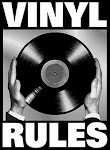

























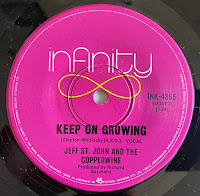





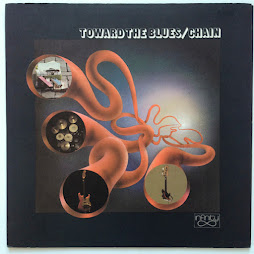




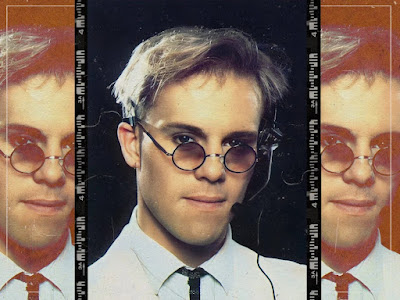









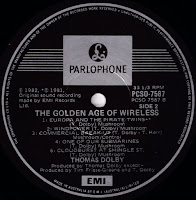















.jpg)



